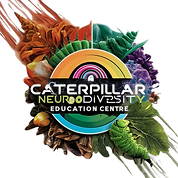Activites for Special Needs Children
- nancy0327
- Nov 30, 2024
- 3 min read
Here are various activities tailored to individuals with special needs, focusing on enhancing development, promoting engagement, and encouraging inclusivity:
1. Sensory Activities
Sensory Bins: Fill containers with materials like sand, rice, or water beads to encourage exploration and tactile stimulation.
Playdough or Slime Play: Encourage fine motor skills and creativity.
Sound Play: Use instruments or objects to create and explore different sounds.
Light Box Activities: Use translucent objects on a light box to enhance visual and sensory stimulation.
2. Art and Craft
Finger Painting: Promotes sensory exploration and creativity.
Collage Making: Use materials like paper, fabric, or natural items for self-expression.
Coloring: Simple coloring books or blank pages to improve focus and motor skills.
Beading or Jewelry Making: Supports fine motor skills and hand-eye coordination.
3. Physical Activities
Yoga: Gentle movements and breathing exercises to promote relaxation and body awareness.
Obstacle Courses: Tailored to their abilities to enhance gross motor skills.
Dancing: Encourages movement and self-expression.
Ball Games: Catching or rolling a ball to improve coordination.
4. Music and Movement
Singing Songs: Builds language skills and provides a sense of rhythm.
Musical Chairs: Teaches listening and social interaction.
Instrument Exploration: Drums, tambourines, or keyboards for sensory and auditory stimulation.
5. Cognitive and Problem-Solving Activities
Puzzles: Jigsaw puzzles, matching games, or memory cards.
Sorting Games: Grouping objects by size, color, or shape.
Storytime: Interactive storytelling to improve focus and imagination.
Board Games: Simplified versions to teach turn-taking and strategic thinking.
6. Social Interaction Activities
Role-Playing Games: Practice daily scenarios like shopping or greetings.
Group Games: Activities like parachute games or Simon Says to build teamwork skills.
Community Outings: Visits to parks, museums, or stores to practice social skills.
7. Life Skills Training
Cooking or Baking: Simple recipes to learn basic cooking skills.
Gardening: Planting seeds or watering plants to connect with nature.
Cleaning Tasks: Folding laundry, tidying toys, or setting the table.
Money Handling: Using play money for basic counting and transactions.
8. Emotional Regulation Activities
Calm Down Corners: A quiet space with sensory tools like stress balls, weighted blankets, or noise-canceling headphones.
Breathing Exercises: Use bubbles or pinwheels to practice controlled breathing.
Feelings Chart: Help them identify and express emotions.
9. Technology-Based Activities
Educational Apps: Interactive learning games on tablets.
Virtual Reality (VR): Simulated environments for social practice or exposure therapy.
Interactive Whiteboards: Drawing or playing interactive games.
10. Nature and Outdoor Activities
Nature Walks: Explore different textures, sights, and sounds.
Water Play: Splashing in water tables or using sprinklers.
Animal Interaction: Visits to petting zoos or therapy animals.
11. Drama and Storytelling
Puppet Shows: Create characters to tell stories.
Acting Out Scenarios: Role-play to encourage expression and creativity.
12. Therapeutic Activities
Swimming (Hydrotherapy): Improves motor skills and provides sensory input.
Equine Therapy (Horse Riding): Builds confidence and body awareness.
Art or Music Therapy: Facilitated by professionals to address emotional and developmental needs.
13. Academic Enrichment
Letter and Number Games: Use magnetic letters or flashcards.
Reading Sessions: Adapted books with large fonts or tactile elements.
Writing Practice: Tracing or using textured surfaces.
14. Relaxation Activities
Meditation: Guided meditations for mindfulness and stress relief.
Aromatherapy: Introducing calming scents like lavender.
Bubble Play: Watching and popping bubbles to relax.
These activities should be personalized to the individual's preferences, abilities, and developmental goals for maximum engagement and benefit.


Comments